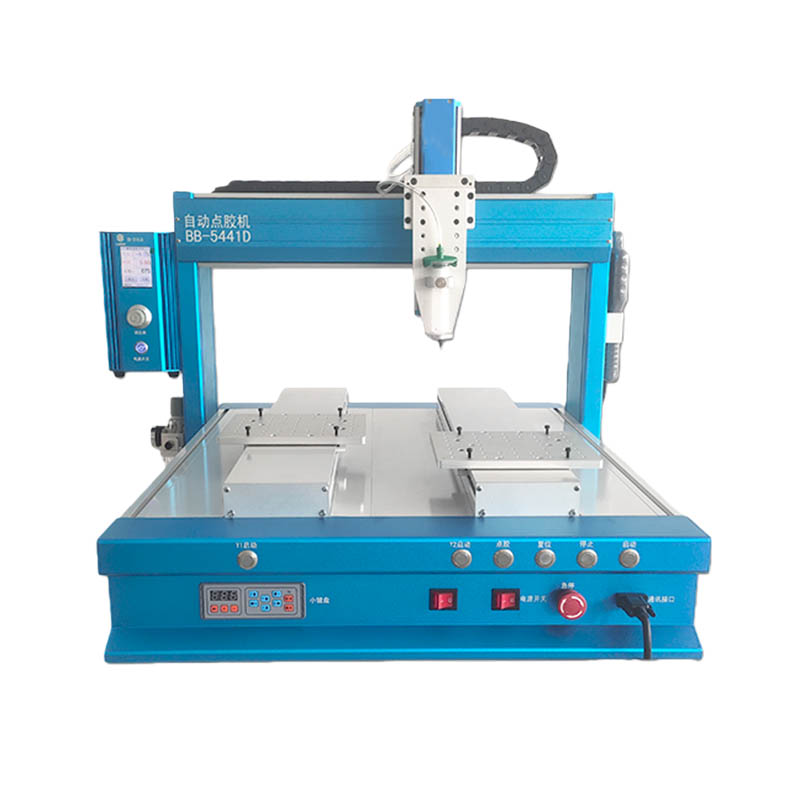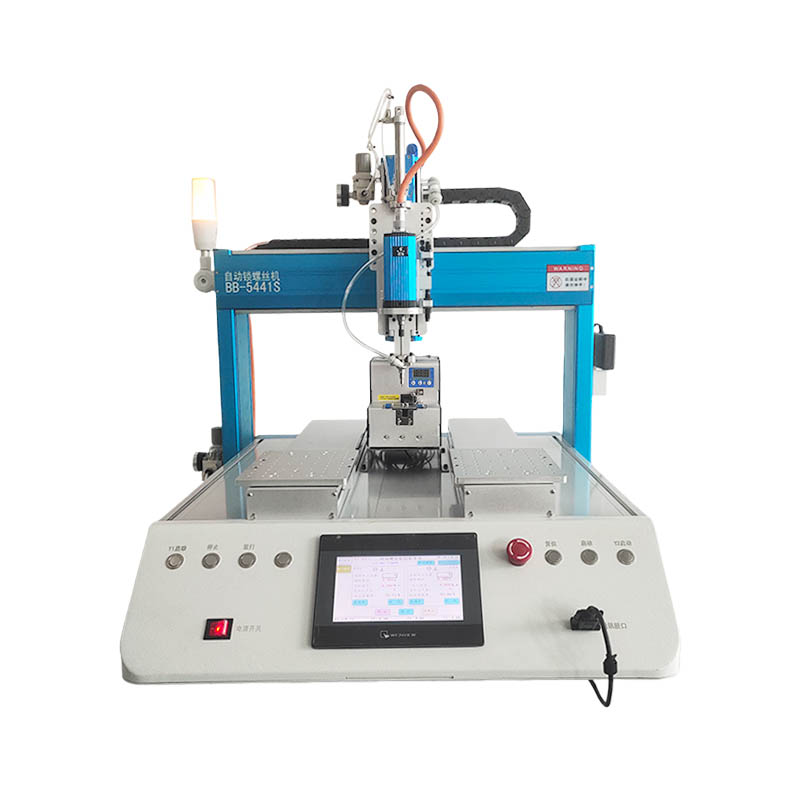How Does a Machine Vision Light Source Become a "Precision Illuminator" for the Industrial Eye?
Release Time : 2025-11-10
In today's era of rapid development in intelligent manufacturing and automated inspection, machine vision systems are widely used in key areas such as product quality control, dimensional measurement, positioning guidance, and character recognition. However, even the most advanced cameras and algorithms are like groping in the dark without proper lighting conditions—unable to see details, let alone make accurate judgments. It is against this backdrop that the machine vision light source, as the "first step" in the entire vision system, plays a crucial role. It is not only a tool for illuminating the object being measured, but also a "precision illuminator" that extracts features, suppresses interference, and enhances contrast through scientific lighting.
Unlike everyday lighting, which pursues "brightness and comfort," the core goal of a machine vision light source is "maximizing information." The design of machine vision light sources needs to be highly customized based on the material, color, shape, and surface condition (e.g., specular, diffuse, transparent, or translucent) of the object being measured, as well as the detection task (e.g., edge extraction, defect identification, 3D reconstruction). For example, when detecting scratches on a metal surface, a low-angle ring light can highlight minute irregularities; reading labels on transparent bottles requires backlighting or coaxial lighting to avoid refraction interference; and identifying solder joints on circuit boards relies on a highly uniform surface light source to ensure image consistency. This "object-specific" lighting strategy makes the light source a key variable in the success or failure of the vision system.
Currently, mainstream machine vision light source types include LED ring lights, strip lights, backlights, coaxial lights, dome lights, and structured lights. Among these, LEDs have become the absolute mainstream due to their long lifespan, fast response, stable color temperature, low power consumption, and ability to flicker at high frequencies. More importantly, LED light sources can precisely control brightness, color (white, red, blue, green, infrared, and even ultraviolet), and flicker timing, synchronizing with the camera shutter to effectively freeze images of fast-moving objects and avoid motion blur. Some high-end systems also support multispectral or polarized light illumination to distinguish material differences that are difficult to discern with the naked eye or to eliminate reflective interference.
The stability of the light source is equally crucial. Industrial environments are complex; temperature fluctuations, voltage fluctuations, dust, and oil contamination can all affect lighting performance. High-quality machine vision light sources employ constant current drive, optimized heat dissipation, and a sealed structure to ensure brightness fluctuations of less than 1% during long-term operation, thereby guaranteeing the consistency and repeatability of detection results. In high-precision measurement scenarios, even a 0.5% shift in light intensity can lead to micron-level errors; therefore, the reliability of the light source is directly related to the quality control level of the entire production line.
Furthermore, the installation method and spatial adaptability of the light source cannot be ignored. Compact designs can be embedded inside small equipment; flexible fiber optic light guides are suitable for irregularly shaped workstations; modular combinations facilitate later maintenance and upgrades. With the rise of 3D vision, structured light projection sources (such as laser line scanning or coded pattern projection) have become core components for acquiring depth information, propelling machine vision from "seeing clearly" to "understanding what it sees."
Ultimately, the value of machine vision light sources lies in transforming light from passive illumination into an active information carrier. It doesn't rely on brute force to light everything, but rather uses intelligent light to illuminate only what needs to be seen, concealing irrelevant noise. When a tiny chip defect becomes clearly visible at a specific wavelength, when a rapidly moving bottle cap is captured with a clear outline in a microsecond flash, that precisely targeted light is the most silent yet powerful starting point for industrial intelligence. As the saying goes, "The camera records, the light source determines what is seen." Before machines truly "understand" the world, there is always a beam of light paving a clear path for them.
Unlike everyday lighting, which pursues "brightness and comfort," the core goal of a machine vision light source is "maximizing information." The design of machine vision light sources needs to be highly customized based on the material, color, shape, and surface condition (e.g., specular, diffuse, transparent, or translucent) of the object being measured, as well as the detection task (e.g., edge extraction, defect identification, 3D reconstruction). For example, when detecting scratches on a metal surface, a low-angle ring light can highlight minute irregularities; reading labels on transparent bottles requires backlighting or coaxial lighting to avoid refraction interference; and identifying solder joints on circuit boards relies on a highly uniform surface light source to ensure image consistency. This "object-specific" lighting strategy makes the light source a key variable in the success or failure of the vision system.
Currently, mainstream machine vision light source types include LED ring lights, strip lights, backlights, coaxial lights, dome lights, and structured lights. Among these, LEDs have become the absolute mainstream due to their long lifespan, fast response, stable color temperature, low power consumption, and ability to flicker at high frequencies. More importantly, LED light sources can precisely control brightness, color (white, red, blue, green, infrared, and even ultraviolet), and flicker timing, synchronizing with the camera shutter to effectively freeze images of fast-moving objects and avoid motion blur. Some high-end systems also support multispectral or polarized light illumination to distinguish material differences that are difficult to discern with the naked eye or to eliminate reflective interference.
The stability of the light source is equally crucial. Industrial environments are complex; temperature fluctuations, voltage fluctuations, dust, and oil contamination can all affect lighting performance. High-quality machine vision light sources employ constant current drive, optimized heat dissipation, and a sealed structure to ensure brightness fluctuations of less than 1% during long-term operation, thereby guaranteeing the consistency and repeatability of detection results. In high-precision measurement scenarios, even a 0.5% shift in light intensity can lead to micron-level errors; therefore, the reliability of the light source is directly related to the quality control level of the entire production line.
Furthermore, the installation method and spatial adaptability of the light source cannot be ignored. Compact designs can be embedded inside small equipment; flexible fiber optic light guides are suitable for irregularly shaped workstations; modular combinations facilitate later maintenance and upgrades. With the rise of 3D vision, structured light projection sources (such as laser line scanning or coded pattern projection) have become core components for acquiring depth information, propelling machine vision from "seeing clearly" to "understanding what it sees."
Ultimately, the value of machine vision light sources lies in transforming light from passive illumination into an active information carrier. It doesn't rely on brute force to light everything, but rather uses intelligent light to illuminate only what needs to be seen, concealing irrelevant noise. When a tiny chip defect becomes clearly visible at a specific wavelength, when a rapidly moving bottle cap is captured with a clear outline in a microsecond flash, that precisely targeted light is the most silent yet powerful starting point for industrial intelligence. As the saying goes, "The camera records, the light source determines what is seen." Before machines truly "understand" the world, there is always a beam of light paving a clear path for them.







